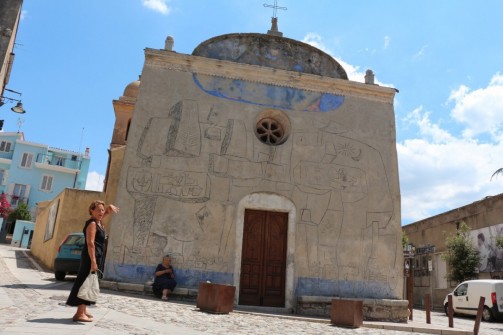The church of Our Lady of Itria, whose original layout is thought to date back to the late 16th century, was formerly dedicated to St. Julian. From about 1630 the church housed the Confraternity of Our Lady of Itria previously operating in the parish, and at the end of the century it was dedicated to Our Lady herself, following an alternation between St. Julian, who found accommodation in a side chapel, and the Virgin of Itria, who occupied the place of honor in the capilla mayor. The architecture of the building is Gothic-Catalan in character with a single nave distinguished by trachyte pointed arches. Five chapels are carved out between the thrust buttresses of the arches. Of particular interest is the cross vault of the chancel, painted with scenes of angels playing music, including the angel with a guitar. Recent restoration has uncovered new and interesting paintings dating back to the 17th century that give a fully painted picture of the church. Another noteworthy element is the wooden statuary group of the high altar, one of the most valuable in Sardinia: by an unknown artist, it dates from the first half of the 17th century. The Madonna, carrying the Child Jesus, appears in defense of the Christian slave against the Saracen. The Virgin’s purple dress is covered by a blue mantle with gilded ornamentation of plant shoots wrapped in numerous spirals within geometric bands, resembling the famous estofado de oro. An element of notable merit and originality of the church is its facade, which, set according to the Catalan-Aragonese scheme, was embellished in 1958 with graffiti by the great Oranian artist of international fame, Costantino Nivola. Devotion to Our Lady of Sa Itria dates back to Byzantine worship and originates from an icon attributed to St. Luke that was found in Jerusalem by Empress Eudocia, and sent by her to Constantinople to her sister-in-law Pulcheria, who built a basilica to house the sacred image. The title Odeghetria means She who leads the way.









